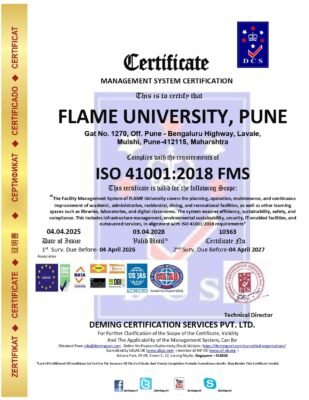Heat Island Reduction, Non-roof: 50%, 75%- The Heat Island Reduction (HIR) strategy for non-roof surfaces aims to mitigate the urban heat island effect by increasing the reflectivity and cooling of outdoor surfaces. Achieving specific reduction levels (e.g., 50% or 75%) typically involves implementing sustainable design practices. Here’s a breakdown: Key Concepts HIR Goals Strategies to Achieve HIR Goals 1. High Solar Reflectance (SR) Materials 2. Shading 3. Open-Grid Pavements 4. Permeable Pavements 5. Alternative Strategies Calculation Example Compliance Standards ASHRAE Standards for solar reflectance and energy efficiency. Deming rating v4.1 Sustainable Sites (SS) Credit: Heat Island Reduction. What is Required Heat Island Reduction, Non-roof: 50%, 75% The Heat Island Reduction, Non-Roof requirements at 50% and 75% levels focus on implementing measures to reduce the heat absorbed and radiated by non-roof surfaces on a project site. These thresholds are typically associated with sustainability certifications, such as Deming Rating and require specific criteria to be met. Heat Island Reduction, Non-Roof Requirements 50% Threshold: 75% Threshold: Eligible Strategies To meet the 50% or 75% requirement, the following measures can be applied: 1. High Solar Reflectance (SR) Materials 2. Shading 3. Open-Grid Pavement Systems 4. Permeable Pavements 5. Combining Strategies Calculation Method To determine compliance with the 50% or 75% requirement: Example Calculation Total Treated Area: 4,000+2,000+1,000=7,000 square feet4,000 + 2,000 + 1,000 = 7,000 \text{ square feet}4,000+2,000+1,000=7,000 square feet Compliance Percentage: 7,00010,000×100=70%\frac{7,000}{10,000} \times 100 = 70\%10,0007,000×100=70% Documentation Requirements Who is Required Heat Island Reduction, Non-roof: 50%, 75% The Heat Island Reduction, Non-Roof: 50% and 75% requirements are typically directed at projects aiming to meet sustainability standards or certifications, such as Deming Rating . The requirements apply to entities involved in designing, constructing, or managing outdoor spaces for various types of projects. Here’s who is generally required to meet these standards: Who Must Comply Why These Entities Are Required to Comply Specific Scenarios When is Required Heat Island Reduction, Non-roof: 50%, 75% The Heat Island Reduction, Non-Roof: 50% and 75% thresholds are required during specific phases of a project, depending on the goals, certifications, or local regulations. Here’s an overview of when these thresholds might be required: When Heat Island Reduction is Required 1. During Certification Processes 2. When Required by Local Regulations 3. For Public or Institutional Projects 4. As Part of Corporate Sustainability Goals Project Phases with Heat Island Reduction Requirements Phase Activity HIR Compliance Checkpoints Site Planning Establish heat island reduction goals, choose materials, and incorporate shading strategies. Initial calculations for meeting 50% or 75% thresholds. Design Development Specify high-SRI materials, shading elements, and open-grid or permeable paving systems. Submit designs for certification or regulatory review. Construction Implement heat island reduction measures as per design. Conduct on-site verification of materials and strategies. Post-Construction Verify compliance (e.g., shading projections, material SRI values). Submit documentation for certification or regulatory approval. Examples of When Specific Thresholds Apply Where is Required Heat Island Reduction, Non-roof: 50%, 75% The Heat Island Reduction, Non-Roof: 50% and 75% requirements are applied in various contexts and locations, typically guided by sustainability certifications, local regulations, and project-specific goals. Here’s a breakdown of where these requirements may be enforced or implemented: 1. Deming Rating -Certified Projects 2. Regions with Urban Heat Island Policies 3. Dense Urban Areas 4. Public Infrastructure and Civic Spaces 5. Sustainability-Oriented Campuses 6. Green Building Markets Where 50% vs. 75% Thresholds Apply How is Required Heat Island Reduction, Non-roof: 50%, 75% Courtesy: Nelca Roco, Deming Rating v4 On-line Review The Heat Island Reduction, Non-Roof: 50% and 75% thresholds are achieved through a combination of sustainable design strategies that address the solar reflectivity, shading, and permeability of non-roof surfaces. Here’s a detailed breakdown of how these requirements are met: Steps to Achieve Heat Island Reduction 1. Calculate Total Non-Roof Hardscape Area 2. Determine the Required Treated Area 3. Apply Eligible Strategies Use one or a combination of the following strategies to meet the percentage thresholds: Eligible Strategies to Meet Requirements a. Use High Solar Reflectance Materials b. Provide Shading c. Use Open-Grid Pavements d. Use Permeable Pavements e. Combine Strategies 4. Verify Compliance 5. Documentation for Certification Example Tools to Help with Compliance Case Study on Heat Island Reduction, Non-roof: 50%, 75% Achieving 75% Compliance Project Name: Green Urban Plaza Location: Phoenix, Arizona, USA Project Type: Mixed-Use Development (Commercial and Residential) Certification Goal: Deming Rating Gold Certification Overview The Green Urban Plaza project aimed to achieve the Heat Island Reduction, Non-Roof: 75% threshold as part of its sustainability goals. Located in a dense urban area with extreme heat challenges, the project team implemented innovative strategies to minimize heat absorption and improve outdoor thermal comfort. Project Details Strategies Implemented 1. High Solar Reflectance Materials 2. Shading with Vegetation and Structures 3. Open-Grid Pavement Systems Results Key Challenges Key Outcomes Lessons Learned White paper on Heat Island Reduction, Non-roof: 50%, 75% Executive Summary Urban heat islands (UHIs) significantly increase temperatures in cities due to the absorption and retention of heat by impervious surfaces such as roads, parking lots, and sidewalks. These temperature increases lead to higher energy consumption, greater greenhouse gas emissions, and adverse effects on public health. Implementing strategies for heat island reduction, particularly for non-roof surfaces, can mitigate these impacts. Achieving reductions of 50% and 75% in non-roof heat absorption is a key goal in sustainability initiatives, including green building certifications like Deming Rating . This white paper outlines methods, benefits, challenges, and case studies related to achieving heat island reduction for non-roof surfaces. Introduction What is the Heat Island Effect? The urban heat island effect is a phenomenon where urban areas experience higher temperatures than surrounding rural areas due to the extensive use of heat-absorbing materials and a lack of vegetation. Non-roof surfaces, such as parking lots and pavements, are major contributors to this effect. Importance of Non-Roof Heat Island Reduction Non-roof surfaces make up a significant portion of urban landscapes. Addressing their contribution to UHIs by adopting reflective materials, increasing vegetation, and using permeable systems can: Key Performance Thresholds 50% Non-Roof Heat Island Reduction Projects achieving this threshold must
















